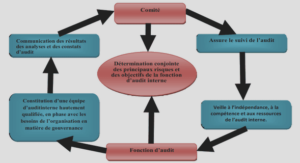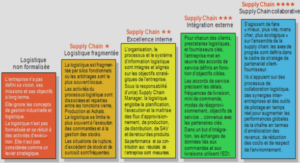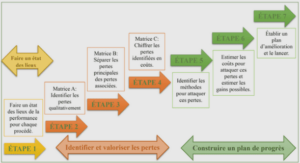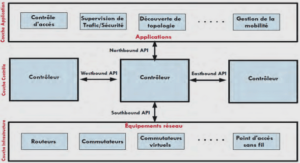Flexible Asphalt
Pavements ACP is a structure made up of different layers. The surface layer carries most of the axle load. This layer is the most expensive to build, consisting of a carefully designed mix of bitumen binders and aggregates. The surface layer is made up of a number of bonded sublayers. The function of this layer is to work as a flexible matrix, absorbing axle loads and transferring the load to underlying layers. Under the surface layer is the granular base course layer. This layer creates thickness and extends the working life of an ACP, protecting it against degradation from climatic and traffic conditions. Its thickness is typically from 100 to 300 mm. The base course layer is normally designed with coarse aggregate and therefore there is less bitumen. This layer reduces structural rutting deformation and keeps construction costs down. Recent research has indicated that the design of the base course layer is more essential than previously thought in terms of increasing the working life of the ACP; a well-designed base course layer will increase fatigue resistance and improve stability(G. W. Maupin and Diefenderfer, 2006); (Olard, 2012); (Theyse, H. L., De Beer, M., & Rust, 1996). Figure 1.4 illustrates a cross-section of a standard ACP.
Thicknesses of ACP layers are designed based on expected axle-load distribution and volumes and adjusted for climatic conditions. To design the ACP, a variety of techniques have been developed. In NCHRP 1-37A, the mechanical-empirical pavement design (MEPDG) method was presented as a technique for the design and evaluation of ACP; MEPDG was developed from mechanistic-empirical (M-E) analyses which were based on material mechanics relating to various input data (e.g., climatic conditions, axle loads) to create an optimal pavement response characteristic. Based on the material and loading properties of the ACP as well as the expected climatic effects, the performance data from lab and field testing need to account for the calculated deflections, stresses, and strains; these structural responses are measured mechanically. Predictions of performance, including fatigue and rutting deformation, are viewed as structural responses and used as inputs for empirical testing (Yang H. Huang, 2004). The MEPDG model accuracy requires reliable field performance data to create a successful empirical model. The empirical models used for MEPDG can be used to predicted distresses directly; otherwise, distresses measured in the field can be used for calibration (Carvalho & Schwartz, 2006).
Literature Review of Previous
Applications of NDS in HMA Due to the fact that an HMA is 95% aggregate by mass, the quality of the aggregate is of great importance. In a HMA, the aggregate may be made of either crushed gravel or stone. In both cases, the aggregate material must be consistently crushed; the particles should have a shape that is more cubical than elongated or flat. Furthermore, aggregates ideally should have minimal quantities of clay, dirt, dust, or other contaminants. The aggregate particles must withstand the axle loads in the finished ACP and, therefore, need to be resistant to abrasion and compression (Transportation Research Board, 2011). Aggregate composition falls into types, according to size: fine aggregate, coarse aggregate, and mineral filler. Fine aggregates are defined as those that pass through a 2.36 mm sieve but cannot pass through a 0.075-mm sieve. Course aggregates cannot pass through the 2.36-mm sieve. Mineral filler is able to pass through the 0.075-mm sieve; it is a very fine material, sometimes called rock dust or mineral dust (European Asphalt Pavement Association, 2008). Detailed lab research was carried out by the US Air Force Geotechnical Laboratory to find the optimum level of NDS and to determine its impact on the functional properties of HMA. The findings indicated that, as NDS increased, OBC decreased.
NDS percentages also affected HMA stability; stability values decreased as NDS percentages increased. Mineral voids in the aggregates decreased as NDS percentage increased. The results from the lab testing generally showed that HMA that only used MCS was more resistant to permanent rutting deformation and that it had high levels of stability; this contrasted with HMA made from NDS. HMA with more than 20% NDS had a great tendency for permanent rutting deformation under heavy traffic loads (Ahlrich, 1991). The effects of geometric shape, particularly particle angularity, on HMA performance was reported in (Lee, C. J., White, T. D., & West, 1999). The introduction of NDS was tested to see how it affected the mechanical behaviour of the HMA. There were two stages to this research. The first stage consisted of different HMA mixes for each of a number of fine aggregate blends. Blends of NDS and MCS were analyzed. The second stage of the study focused on improving the HMA designs that had demonstrated a great deal of permanent rutting deformation. The mixtures considered were a stone sand mix and a slag sand mix, both with S-shaped particle distributions.
Strategies to improve the mixes included substituting some of the MCS with NDS, using mineral fillers, and adjusting the particle distributions in the aggregate blend. Adding NDS and mineral filler failed to improve the permanent rutting deformation of the MCS. In order to improve rutting performance the gradation had to be changed. Permanent rutting deformation was lowered with lower bitumen levels and higher relative mineral aggregate density. Another study investigated the mechanical properties of HMA made from natural aggregates and recycled concrete aggregates (RCA) in ACP surface layers (Marques, V. D. C., de Queiroz, B. O., de Lacerda, D. M., Gouveia, A. M. D. A., & de Melo, 2014). The OBC was determined by using the Marshall method; the resulting HMA was evaluated for its mechanical properties. The HMA samples were made up of natural aggregates; RCA was then added in the following percentages: 25%, 50%, 100%. The findings suggested that it is possible to replace natural aggregates with up to 25% RCA for HMA surface layers. This lowered project costs and the environmental impact of the roadworks.
Another study looked at the mechanical characteristics of HMA that used RCA in low volume roads (Mills-beale & You, 2010). The RCA was used instead of aggregate made from Michigan traprock in the following percentages: 25%, 35%, 50%, and 75%. The permanent rutting deformation was evaluated using the rutting analyzer test, tensile strength ratio (for moisture susceptibility), dynamic modulus, indirect tensile test, resilient modulus, and the construction energy index. The RCA mixes performed less well in terms of dynamic stiffness than the control mix; when RCA was increased, HMA stiffness decreased. As RCA levels decreased, the tensile strength ratio and the moisture susceptibility increased; the 75% RCA mix failed to meet acceptable standards. According to the compaction energy index, using RCA could save compaction energy. A small amount of RCA in HMA was suggested for low volume roads. Another study on the use of NDS on fatigue cracking on ACP tested two fine aggregates, NDS and MCS (Ahmed, 2016). NDS was substituted for MCS in the following amount: 0%, 25%, 75%, and 100% (by weight).
All the aggregate passed through sieve No.8 and was retained by sieve No.200. Only one bitumen binder was tested, B40/50. Tests indicated that the best levels of NDS in the HMA was either 0% or 25% by mass. Another investigation looked at the effect on HMA by using natural river sand (NRS) containing contaminants (Niazi, Y., & Mohammadi, 2003). For all mixes, bitumen B60/70 were used. One type of coarse aggregate was mixed with different fine aggregates. These fine aggregates were classified according to their geometric form and surface texture. Three fine aggregate mixtures were prepared: 1) MCS; 2) NRS; 3) a blend of MCS and NRS. The Marshall Method was used but it was found that the method was insufficient to determine the maximum recommended percentage of NRS in HMA; as such, more research was recommended. The findings from the unconfined compressive strength tests showed that NRS, particularly when containing contaminants, resulted in a reduction of the bearing and energy absorption capacity of the HMA; it raised the possibility of permanent rutting deformation and bleeding in ACP surface layers. A further study attempted to determine the material properties of NDS asphalt mixes and to determine the practicality of its use in roadworks projects (Caro, S., Sánchez, D. B., & Caicedo, 2015).
The Dynamic Mechanical Analyzer (DMA) test was used to evaluate the linear viscoelastic characteristics of the material as well as how the mixtures deteriorated under dynamic loading. The findings showed high variability in material properties in the sandasphalt mixes. Furthermore, the bitumen binder had low complex moduli, high penetration and phase angle values. Testing also showed that the compaction temperature strongly affected the resistance of the mix. There was as much as 92% difference in the complex modulus between the specimens compacted at room temperature and the ones compacted at 140ºC. The high variability and the mechanical properties of the mix made it unsuitable for high-volume roadworks projects. The results, however, suggested that it could suitable to stabilize base or subbase layers or possibly used for the surface layer in low-volume roads. Overall, the studies under review did not examine the effect of adding NDS to HMA as an end objective; this is to say, they did not attempt to solve the problem presented by building low volume roads in desert regions where NDS is freely available. For example, there was no discussion of optimal levels of NDS or the best bitumen to use or using mineral additives. As such, there was no systematic attempt to find other suitable materials to make the HMA of sufficient quality for use. Therefore, it is necessary to carry out this research to fill a gap in the area of low volume roads in hot and arid climates to provide guidelines on the feasibility and practically of using NDS in HMA. The findings of this research will have a major impact on the use of locally available materials, helping to minimize the cost of ACP construction.
1.1 Background |






